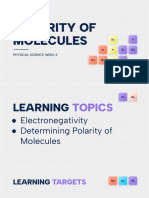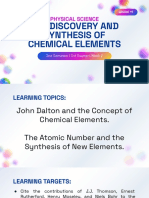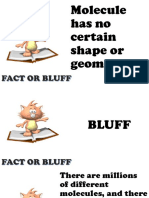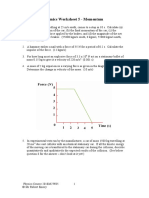0% found this document useful (0 votes)
108 views58 pagesPS Lesson 1
Here are the key points about the evolution of the atom's representation from each model:
a. John Dalton's model (1808) - Atoms are indivisible, indestructible spheres with unique mass and properties. Could not explain chemical reactions.
b. J.J. Thomson's model (1904) - Atoms contain positive charge uniformly distributed and electrons embedded in it. Explained cathode ray experiments.
c. Ernest Rutherford's model (1911) - Atom contains a very small, dense positively charged nucleus with electrons orbiting it. Explained alpha particle scattering experiments.
d. Neils Bohr's model (1913) - Electrons orbit in fixed, quantized energy levels. Explained
Uploaded by
Benjo HilarioCopyright
© © All Rights Reserved
We take content rights seriously. If you suspect this is your content, claim it here.
Available Formats
Download as PDF, TXT or read online on Scribd
0% found this document useful (0 votes)
108 views58 pagesPS Lesson 1
Here are the key points about the evolution of the atom's representation from each model:
a. John Dalton's model (1808) - Atoms are indivisible, indestructible spheres with unique mass and properties. Could not explain chemical reactions.
b. J.J. Thomson's model (1904) - Atoms contain positive charge uniformly distributed and electrons embedded in it. Explained cathode ray experiments.
c. Ernest Rutherford's model (1911) - Atom contains a very small, dense positively charged nucleus with electrons orbiting it. Explained alpha particle scattering experiments.
d. Neils Bohr's model (1913) - Electrons orbit in fixed, quantized energy levels. Explained
Uploaded by
Benjo HilarioCopyright
© © All Rights Reserved
We take content rights seriously. If you suspect this is your content, claim it here.
Available Formats
Download as PDF, TXT or read online on Scribd
/ 58

























































































